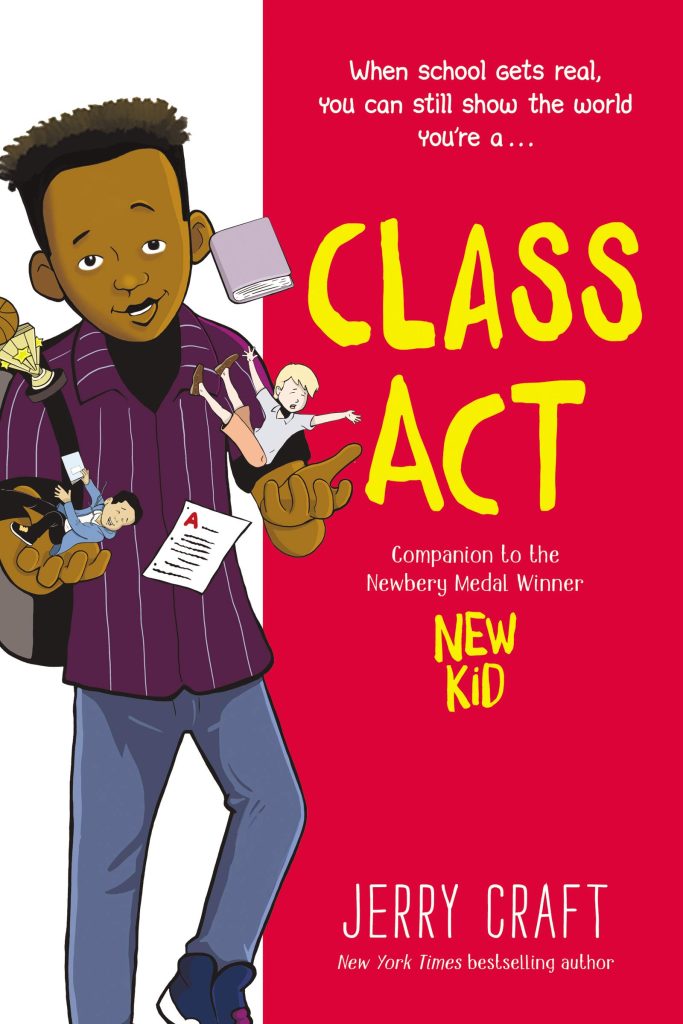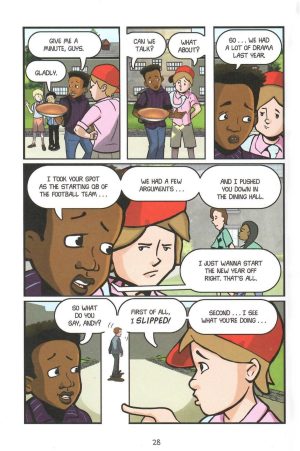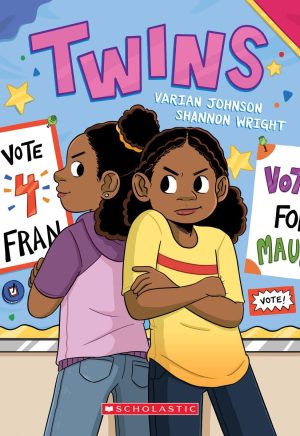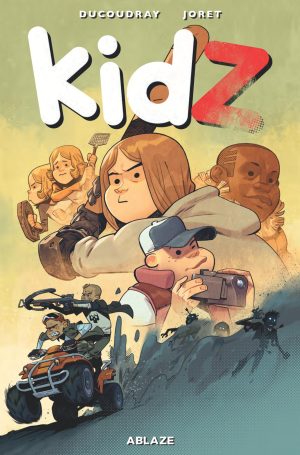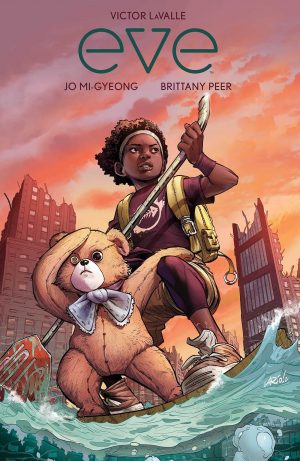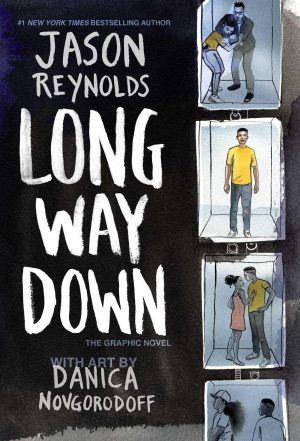Review by Ian Keogh
In Class Act Jerry Craft catches up with Jordan Banks, a talented young artist who moved to a new neighbourhood and new school aged 12 in New Kid. He eventually made friends, but as seen over the opening pages, he, Drew and Liam all have concerns about returning to school. Puberty is kicking in, except in Jordan’s case, where it seems on hold. He’s not grown over the summer. However, although Jordan’s comics still feature, Craft transfers the spotlight to Drew, also African-American and frequently told by his grandmother it means he has to work twice as hard to be as good.
Craft has modified his drawing to encompass exaggeration and is now including some shopped-in art. Perhaps he doesn’t want to draw a sweet potato pie time and time again, but the sample art shows the shopped in version looks to be floating on panels. The exaggeration works better, with presentations of the unreal world raising smiles, the back to school zombies in the early pages being an example. Craft’s basically cheery style, though, brings home life in school and away from it, conveying the emotional impact his story has at various points.
A successful aspect of New Kid was Craft highlighting the daily small examples of racism Jordan and Drew endure at school, which is continued here, but also counterpointed by the class bully getting an inventively conceived taste of his own attitudes. Craft’s also come up with a succession of good lines for the teacher with foot in mouth disease. Another continuing feature is the school being considered privileged, and how the scholarship kids face another form of discrimination. That’s something increasingly prominent as Class Act continues, but it also enables Craft to highlight the woeful lack of resources in ordinary schools.
There’s no single over-riding plot to Class Act. Some topics recur, such as racism and the differences between levels of wealth and status, but it’s the ups and downs of a school year. Dealing with issues such as a sudden awareness of privilege can be a little clumsy, but intended to stress the gaps to a younger audience. In the book’s final third various threads coalesce to give Drew a crisis. That’s well handled. Other people’s problems can seem trivial to an outsider, but they’re very real to the troubled person, and that’s acknowledged sympathetically. In Drew’s case support comes from an unlikely source and that counterbalances some all too obvious cultural swipes that follow, although they’re funny, and the strips drawn by Jordan consistently hit the right spots.
Like New Kid before, Class Act has viable and sensible points to make. Some will find them obvious, but if that were universal Craft wouldn’t have to make them in the first place, and just as some might find this a little tame, no youngster is going to want to read a lecture. Class Act is designed to give viewpoints and prompt thought, and as such it’s a graphic novel best placed on school or public library bookshelves to be accessed by kids who’d not otherwise come across it.
Craft concludes his trilogy with School Trip.
